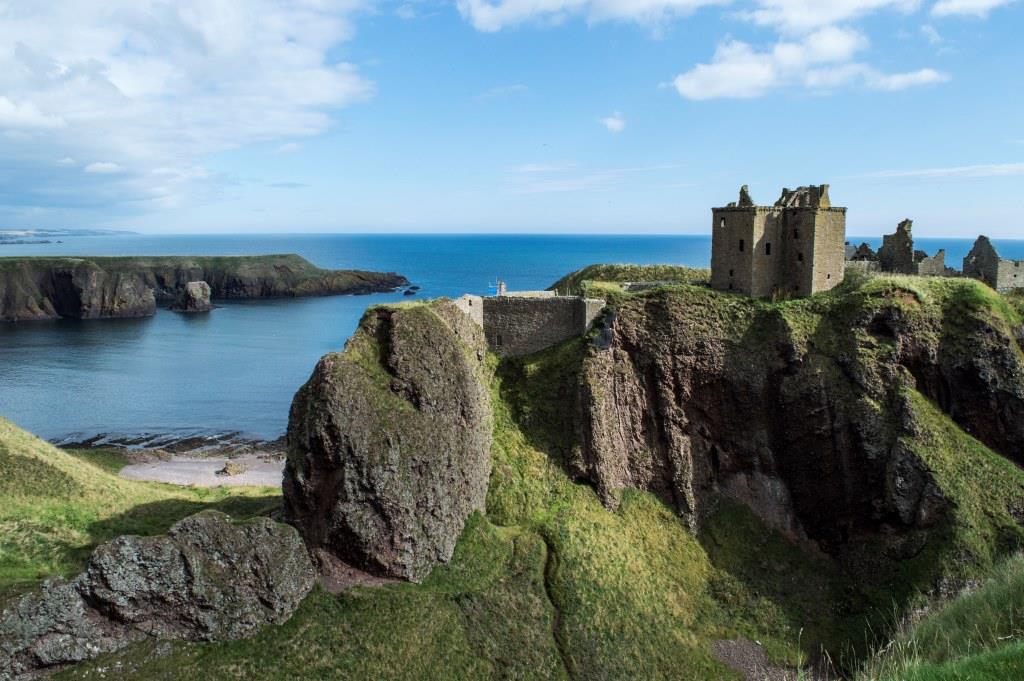Dunnottar Castle

Dunnottar Castle Details
Dunnottar Castle, a C14 tower house on a peninsular fortified by Picts with C16/17 ranges and abandoned C18.
- Closest To: Stonehaven
- Access: Chargeable Public Access
- Grid Reference: NO881838
Dunnottar Castle is one of the most photographed castles in Aberdeenshire, largely due to the combination of scenery with the castle ruin. However, this has unfortunately led to an increase in statements that are historically inaccurate about it. It is privately owned and open to the public for a fee.
There is no evidence for a castle of Dunnottar until 1336, when it was fortified by William Sinclair of Roslin on behalf of King Edward III of England – and the defences were taken and destroyed by Sir Andrew Murray. Previous references in contemporary documentation refer solely to the lands of Dunnottar or the church. In about 1396, Sir William Keith built the tower house on the landward side of the promontory. As this was holy ground, he was excommunicated for his efforts, and had to promise to build a new chapel to be readmitted to the church. Any buildings that he built other than the great tower have been lost, replaced by the 16th and 17th century palace and domestic buildings, although remains of the older gate entrances are probably encased in the later defences.
The castle was visited by many of the Scottish monarchs, and the Keith family retained the principal military office of State, the role of Great Marischal. Towards the end of the reign of James II, William Keith was raised to the peerage, being created the first Earl Marischal. Responsible also for looking after the Regalia of Scotland, the Keiths flourished, but as committed royalists for the most part, their fortunes were subject to great fluctuations. The fourth earl, for example, seems to have retired from politics altogether, whereas his grandson the 5th earl helped arrange the marriage of James VI. It was his grandson the 7th earl who hid the Scottish Regalia at Dunnottar from Oliver Cromwell’s men, and spent several years in prison at the Tower of London. The Keith family retained Dunnottar into the 18th century, when they were forfeited for their Jacobitism, and when the 8th earl was eventually permitted to return to Scotland, the castle had been sold and been left to the elements, all the contents and fittings auctioned off. It was only in 1925 that stabilisation works began.
Official Dunnottar Castle website
Become a supporter of my work to access a more detailed history